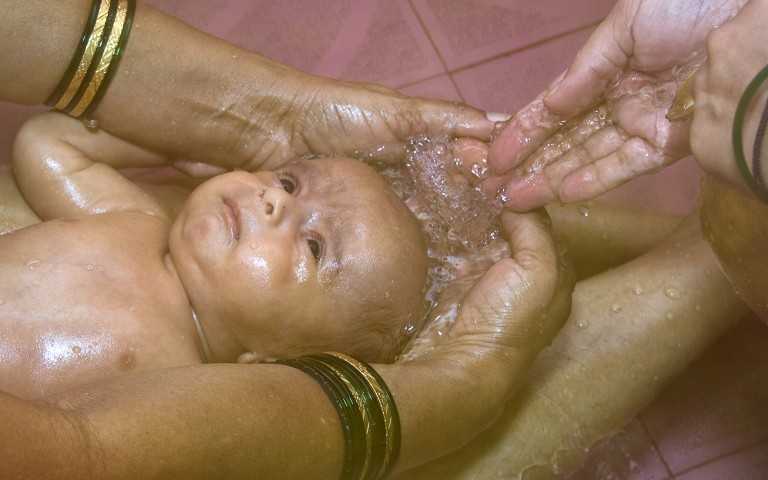
Photo: Mcmorabad | Dreamstime.com
Cradle cap looks like patches of a yellowish to brown flaky or scaly substance present on an infant’s scalp. This condition is common among young babies. Although it is harmless and generally clears up untreated in a few weeks or months, if you find that it is causing discomfort to your child you should consult your doctor as it could be a symptom of a more serious ailment, such as eczema.
Cradle cap is not restricted to the head area. Babies can also get the condition on their neck, ears, face, bottom or places where their skin folds such as their armpits. It is not contagious or brought on by allergic reactions. Cradle cap has no link to poor hygiene or general care of the baby either. It is thought to occur due to overactive sebaceous glands, which produce an oily matter called sebum. However, a definite cause of the condition is still unknown.
How to treat it
Cradle cap can be flaky and appear to be loose on the surface of the skin. Never pick on the flakes or scales on your baby’s head in a bid to get rid of them as this can cause irritation and infection. As flakes fall off, you may notice your baby’s fine hair coming away with it. Don’t worry about that; this hair will grow back and the condition leaves no permanent damage to the scalp. Cradle cap usually clears up by the time a baby is one year old without any special treatment. Washing your child’s scalp with baby shampoo and massaging it with baby oil at night can help limit the extent of the condition.
If the affected areas seem to be spreading (to the face or other parts of the body) or shows inflammation or soreness, ask your doctor for guidance on treatment. For cases where cradle cap becomes more severe due to infection or inflammation, your doctor may prescribe antibiotics or a special antifungal cream to help treat it. There are also specific shampoos to treat cradle cap available that you could consider using, with your doctor’s advice.
